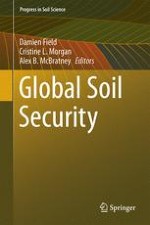2017 | OriginalPaper | Buchkapitel
6. Soil Capability for the USA Now and into the Future
verfasst von : Maxine J. Levin, R. Dobos, S. Peaslee, D. W. Smith, C. Seybold
Erschienen in: Global Soil Security
Verlag: Springer International Publishing
Aktivieren Sie unsere intelligente Suche, um passende Fachinhalte oder Patente zu finden.
Wählen Sie Textabschnitte aus um mit Künstlicher Intelligenz passenden Patente zu finden. powered by
Markieren Sie Textabschnitte, um KI-gestützt weitere passende Inhalte zu finden. powered by
